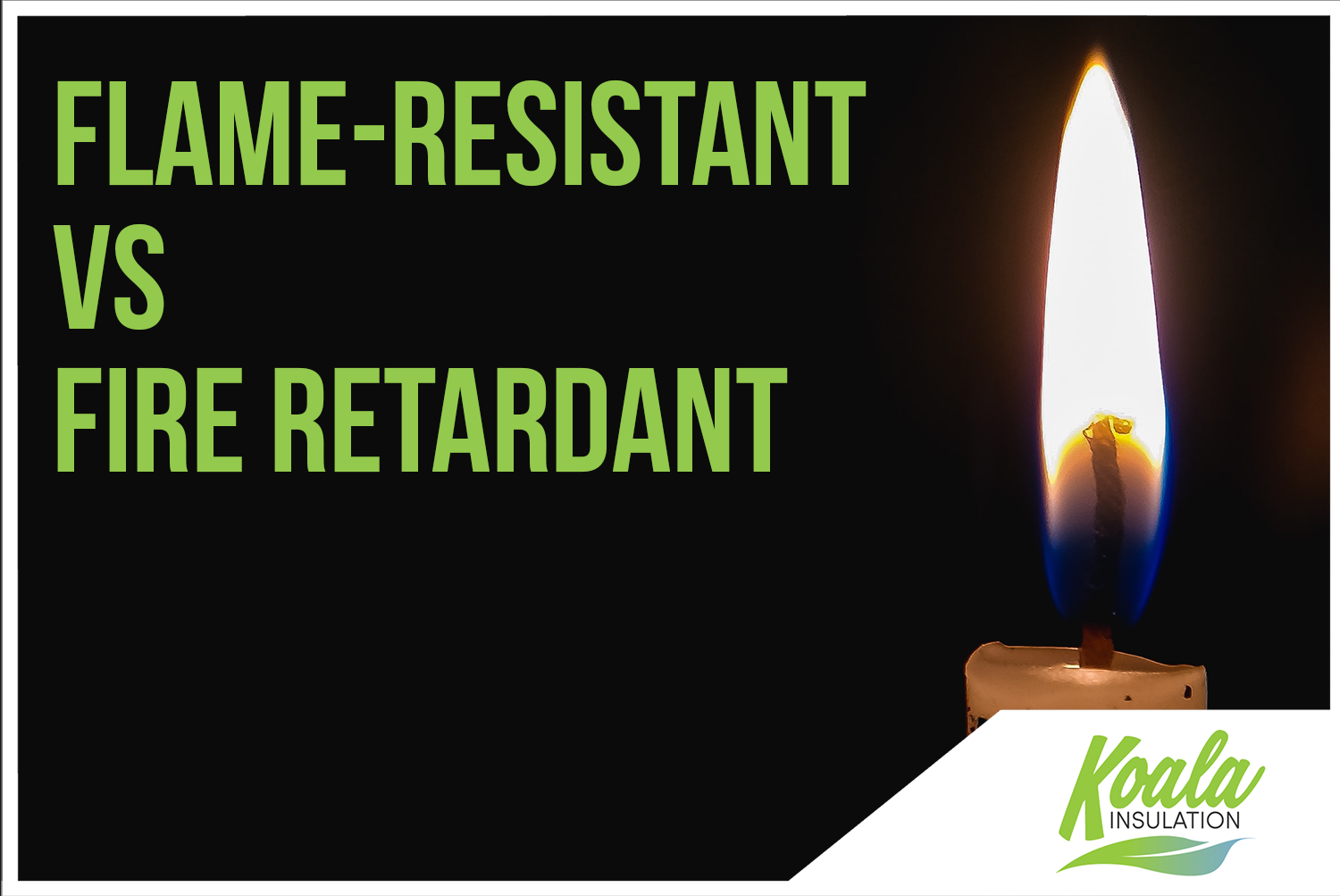Insulation Material Safety: Flame Resistant Vs Fire Retardant

Your priorities as a homeowner include the health, safety, and comfort of you and your household. While insulation often suffers from the "out of sight, out of mind" treatment, it's important for you to have an understanding of the material that has been installed in your home. Not only does insulation improve temperature regulation, but it also can reduce health risks and potential hazards. One of the most important considerations for choosing the best insulation material to put in your home is fire safety.
It's crucial to ensure your household is educated on the fire resistance of a material and how it applies to your climate, building, and coverage. While most insulation materials have inherent fire-resistant properties, several commonly installed types need to have additional chemicals or coatings applied to be considered fire safe. Our team of experienced industry professionals at Koala Insulation of Southeast Denver has put together educational information to break down the fire safety components of commonly installed materials.
Flame Resistant VS Fire Retardant
For those unfamiliar with the difference, flame-resistant and fire retardant may be interchangeable in their vocabulary. However, the terms do have their own significant meanings. When it comes to the materials being installed in your home, it's important to not only know the difference between the two but also what that means for the insulation being used. Luckily, it's not a complicated difference to understand.
Flame-resistant insulation materials are considered "inherently non-flammable". They're naturally noncombustible, meaning their resistance to fire is within their chemical make-up. These products don't typically need additional chemicals applied to them during production. On the other hand, the opposite is the case for fire retardant materials. This type of insulation is chemically treated to give the material slow-burning or self-extinguishing properties to improve the safety of the product. It's important to remember that while neither flame-resistant nor fire retardant material will necessarily extinguish a severe house fire, they can be a crucial barrier to slow the spread in many situations.
Fiberglass and Mineral Wool
When first understanding the difference between flame resistance and fire retardant materials, it's important to have a basic breakdown of each material. One of the most easily recognizable insulation materials for homeowners is fiberglass or mineral wool; you may remember your parents telling you not to eat or touch the fluffy stuff in the attic. These materials are considered flame-resistant, as they're naturally noncombustible, even if they've significantly deteriorated over time.
Fiberglass and mineral wool may have combustible facings (the kraft paper or foil that may cover batt insulation), but these are additionally covered with a code-approved fire barrier. When discussing options with your local insulation contractor, you should take note of where potentially hazardous materials are and understand the precautions – if any – that need to be taken into account in these areas.
Cellulose
Many houses that are looking for energy-efficient and cost-effective installations are going to tick off most boxes when they take a closer look at blown-in cellulose material. Cellulose insulation is made of 80% recycled material, with a majority of the material used often being recycled newspaper. While the recycled material is considered highly combustible, the material is chemically treated during production. This makes it a fire retardant material.
For some homeowners, the idea of fire retardant may be less appealing than a flame-resistant material. However, it's important to remember our note from before: neither type of material is going to entirely stop a hazardous house fire. Instead, both material types have their advantages in these kinds of accidents and should be considered side by side during your decision process. For more information on cellulose insulation and a controlled demonstration on its response to fire, check out Koala Insulation's video "Insulation 101: Cellulose Insulation.”
Spray Foam
A common myth about spray foam is that it's a significant fire hazard for your home because of the chemicals mixed together to create the installed material. While spray foam will ignite at about 700?, there are additional steps taken to make the material fire retardant. Once applied, spray foam is covered in an intumescent coating, often a type of paint. This creates a protective barrier that helps protect the material from high temperatures. For perspective, an intumescent coating is a commonly used product to cover many different combustible objects and materials in both residential and commercial buildings.
Learn More with Your Local Insulation Experts
When you're deciding what materials to install in your home, the health, safety, and comfort of you and your household are your top priorities. When you schedule a free evaluation with Koala Insulation of Southeast Denver, you'll need to consider the R-value, costs, and safety of your options. Because insulation can be found throughout your home – from your attic and ceiling joists to the walls, floors, and basement – flammability is a crucial factor to review.
Our team of industry experts is dedicated to educating our southeast Denver community on the safety of insulation. Not only is it important for you to be familiar with the material being installed in your home, but it’s also crucial to understand the safety procedures in place to keep you and your household secure. Schedule a free evaluation with Koala Insulation of Southeast Denver today to learn more about insulation material and how it can improve the comfort, safety, and savings of your home.
Find Your Location


Get a quote



